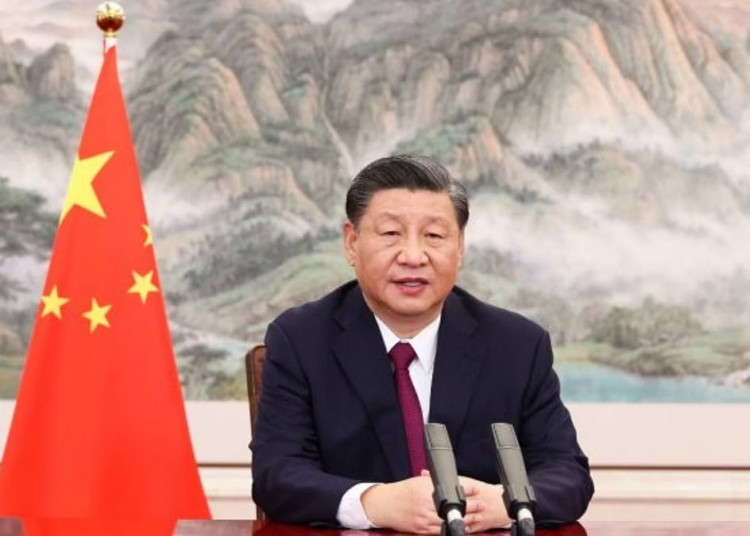When the government of the People’s Republic of China launched the Belt and Roads Initiative (BRI) in 2013 by President Xi Jinping to expand its developmental engagements around the world, Africa instantly became the continent that was poised to benefit from the extensive investment and infrastructure development following growing ties with China.
The new Chinese global initiative of the One Belt One Road is aimed to integrate the world economically by connecting countries for shared future and inclusive economic growth and development. This historic initiative is shaping the world and perhaps trying to form a new world order through inclusive cooperation.
This year, the BRI is ten years since its inception and most countries in Africa, especially Nigeria appeared to have exploited the opportunity yet there are infrastructure gaps to fill by most countries of the continent as they are still experiencing a lack of funding to provide better infrastructure.
According to the African Development Bank report, infrastructure financing needs in Africa are estimated between US$130-170 billion a year. The BRI could offer significant assistance as the continent can gain access to the Beijing-based Asia Investment and Infrastructure Bank to fund projects under the BRI.
BRI is also known as One Belt One Road, an initiative project that consists of a Silk Road Economic Belt and the 21stCentury Maritime Silk Routes. This initiative according to Chinese official figures now has about 149 countries as members as of July 2022 and African countries are a major part of it.
African countries are participating in it by signing Memorandums of Understanding in May 2021. They have benefited from a number of infrastructure projects such as roads, railways, ports, and power plants. Some of these according to official records include a “2,600 MW hydropower scheme in Nigeria, $3 billion in telecom equipment to Ethiopia, Sudan, Ghana, and major railroad projects in Nigeria, Gabon, and Mauritania.”
Nigeria, the biggest economy in Africa, officially joined the BRI in 2018 at the 2018 Beijing Summit of the Forum on China-Africa Cooperation (FOCAC). Under this platform China has deepen investments in areas of a large hydropower plant, a rail line and a deep seaport in Nigeria.
Other valuable projects in Nigeria include the construction of a new 2,733 km Lagos-Kano standard gauge railway, which was started in 2006, conducted by China Civil Engineering Construction Corporation (CCECC). This project has played a significant role in modernizing the existing narrow gauge system to a wider standard gauge system.
The spread of rail lines in Nigeria has added a boost to the local economic development reducing the gap of inadequate physical infrastructure, which has brought positive benefits. The trains could noe take many passengers and goods with reasonable transport times and cut transaction costs along with the cities.
Improved accessibility to urban centers and connectivity now appear to unlock the potential of millions of people across the Nigeria . One other major project is the Abuja-Kaduna train, which connects passengers from Idu station, the industrial development area of Nigeria’s capital city to Rigasa Village in Kaduna. This infrastructure, as expected, is gradually opening new business activities to spur trade and enhance connectivity to achieve the distribution of the economic sector.
In another dimension, new towns are being built including education institutions, and other new basic service facilities along the rail line which will ultimately create more jobs to address growing unemployment which is above 33% in Nigeria as well as tackle poverty rate in Nigeria said to be over 40%.
Lagos, Nigeria’s commercial and business hub has a fair share of the projects initiated under the BRI. Such projects as the Lagos-Ibadan train route connects Lagos to Ibadan, one of the largest cities in the South West of Nigeria. This has helped in reducing gridlock on the Lagos-Ibadan expressway.
However, it has to be put into consideration that these Chinese projects are constructed based on concessionary loans and Nigeria is required to produce the counterpart funding sometimes to the tune of 15%. How much of this counterpart funding has been committed to the projects by the Nigerian government is still subject to investigation.
There are reports that irrespective of the benefits, there might be long time effects of these Chinese investment especially when Nigeria will be required to pay back the loans in the coming years. It is also pertinent to emphasize mutual benefit between China and Nigeria, especially in the funding mechanism.
Experts have advised that “a feasibility study is required to ensure that all activities and projects in the framework of the BRI must contribute to sustainable economic growth in order to meet Sustainable Development Goals (SDGs) in Nigeria.”
Experts are also of the opinion that “All BRI’s projects in Nigeria are supposed to be in line with the national interests, which also prioritize local government cooperation by building the capacity of African local authorities to exchange knowledge, experiences, and expertise that would surely influence its regional development.”
This might not be the situation at the moment therefore Nigeria must brace up to avoid being trapped in avoidable but difficulty repayment of the loans. This is the only way that the country will make the Chinese investment more valuable to its economy and mitigate the impacts of the loans.
We’ve got the edge. Get real-time reports, breaking scoops, and exclusive angles delivered straight to your phone. Don’t settle for stale news. Join LEADERSHIP NEWS on WhatsApp for 24/7 updates →
Join Our WhatsApp Channel










